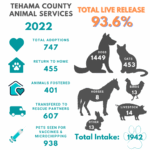In recent years, the dialogue surrounding animal cruelty has gained traction, echoing an urgent plea for reform in legislative frameworks governing the treatment of animals. As societal values evolve, the question of whether jail time constitutes a fair punishment emerges as a topic rife with complexity. This examination seeks to unravel the intricacies of this legal dilemma, considering not only the acts of cruelty themselves but also the broader implications of punitive measures on both animals and society.
Animal cruelty manifests in many forms, ranging from gross neglect to systematic abuse. These acts often provoke visceral reactions from the public, igniting protests, advocacy, and legislative change. However, despite the palpable outrage, the legal repercussions for offenders vary significantly across different jurisdictions. Some areas enforce stringent penalties, while others impose little more than a slap on the wrist. This inconsistency raises questions about justice: Is incarceration the most effective means of affronting animal cruelty, or does it merely serve as a punitive measure with limited rehabilitative impact?
At the heart of this inquiry lies the legal construct of animal cruelty. Defined variably across states and countries, animal cruelty laws typically encompass two categories: intentional cruelty and negligent cruelty. Intentional cruelty, characterized by willful acts of harm, often elicits harsher penalties, including potential jail time. Conversely, negligent cruelty usually results in fines or mandated education programs. The disparity in punishments prompts consideration of the underlying philosophy of justice—is it merely retributive, or does it encompass rehabilitative dimensions as well?
Proponents of incarceration argue that cruel perpetrators must face punitive consequences commensurate with the gravity of their actions. This viewpoint is grounded in a philosophical framework asserting that punishment serves as a necessary deterrent. The rationale is straightforward: by imposing jail time, society communicates that animal suffering is intolerable and will not be overlooked. High-profile cases of egregious abuse garner public attention and amplify calls for justice, further entrenching the belief that jail is an appropriate response.
However, the effectiveness of retribution in actually preventing future acts of cruelty remains contested. Critics of imprisonment highlight that, while it may provide a temporary sense of justice, it does little to address the root causes of animal abuse. Many offenders come from backgrounds marred by violence or lack educational resources to understand the gravity of their actions. From this perspective, a focus on rehabilitation rather than retribution may yield more lasting solutions. Mandatory counseling, community service, and educational programs about humane treatment could foster empathy and understanding—key components in the quest for a more compassionate society.
The complexities deepen when considering mental health. A significant number of animal abusers exhibit psychological disorders that inform their actions. Incarcerating these individuals without addressing underlying issues may serve only to perpetuate the cycle of violence—one that often extends beyond animals to human victims and communities. Thus, the legal framework surrounding animal cruelty must reckon with the intersectionality of mental health, criminal justice, and social responsibility.
Another compelling argument against automatic incarceration arises from the concept of proportionality. Legal punishment is typically guided by the principle that the punishment should fit the crime. Yet, many animal cruelty cases involve a spectrum of behaviors, ranging from violent actions to unintentional neglect. Treating these offenses with uniform severity may not only seem unjust but can also strain judicial resources and divert attention from more severe crimes. Lawmakers must grapple with the challenge of creating a nuanced legal response that captures the complexity of each case while ensuring accountability.
Furthermore, public sentiment plays a significant role in shaping the legal responses to animal cruelty. Awareness campaigns and advocacy efforts have the power to transform societal norms and influence legislative action. Increased public interest often leads to the introduction of bills aimed at strengthening animal protection laws. Jurisdictions are slowly recognizing the importance of aligning legal repercussions with societal expectations. As animal advocacy gains momentum, the legal landscape may shift towards more consistent and severe penalties, including jail time for heinous acts.
Yet, as we expound upon the potential benefits of incarceration, we also must ponder its implications for animal welfare. Animals are often seen as property within the legal system, complicating the pursuit of justice in cruelty cases. If jail sentences are to become the norm, conversations about the treatment and rights of the animals must accompany these discussions. The legal system should not only hold perpetrators accountable but also prioritize the rehabilitation and care of the animals involved. This dual focus could foster a more comprehensive approach to combatting cruelty.
As our understanding of animal sentience deepens, the legal system must evolve. The dialogue surrounding animal cruelty signifies a pivotal moment in cultural and moral evolution. The exploration of whether jail is a fair punishment invites a broader reflection on society’s values, the nature of justice, and the future treatment of non-human beings. With advocacy efforts intensifying and societal awareness expanding, the hope for a just and compassionate legal framework emerges on the horizon—one that seeks not only to punish wrongdoers but also to cultivate a humane world.
In conclusion, the question of whether jail is a fair punishment for animal cruelty is not merely a legal inquiry but a philosophical one, traversing the realms of ethics, psychology, and social justice. As sentiments shift, it is crucial that laws reflect a commitment to both accountability and compassion. Society stands at a crossroads, beckoning toward a future that promises a more profound respect for all sentient beings.






